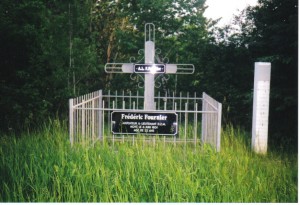History of Kempt Road

Enter the universe of the first road linking the entire St Lawrence region to the Maritime Provinces.
At the beginning of the XVIII century, the only route between Quebec City and Saint John, New Brunswick was via the Témiscouata Portage and along the Saint John River. Following the war of 1812-1814 between Canada and the United States, Governor James Kempt saw a strategic advantage in building a new route farther away from the American border and he ordered the construction of the road that would bear his name in 1830.
It was composed of old routes used by the American Indians who used birch bark canoes to cross the rivers and who portaged over long and shorter distances. In addition to improving postal service, this road opened the Matapedia Valley to colonization and served as a means of communication for the population on both sides of the Bay of Chaleurs.
The road was completed in 1832, at a cost of 30 000 $. Many persons who travelled this road died due to the cold and bad weather during these expeditions. Many drowned when they attempted to cross the rivers. To assist these poor travellers, the government established four posts with guardians along the road.
Following numerous complaints by travellers concerning the condition of the Kempt Road, the government abandoned it in 1857. It was replaced by a new route from Causapscal to the Restigouche River and then along the Matapedia River. This road was named the Matapedia Road and it was completed in 1862. One of the conditions imposed by the Maritime Provinces to join the Confederation was the construction of a railway linking all of the Canadian provinces. In 1868 a decision was made to build a railway in the Matapedia Valley.
On July 1, 1876, the Flavie-Campbellton section was inaugurated.
This route followed the river and the former Kempt Road became a colonization route between Causapscal and Ristigouche contributing to the establishment of colonies in Sainte-Marguerite-Marie and Saint-Fidèle-de-Restigouche.
Its construction was a determining factor for the colonization of the Gaspesian territory in the 19th century and its rich history of adventures of all types deserves to be told.

